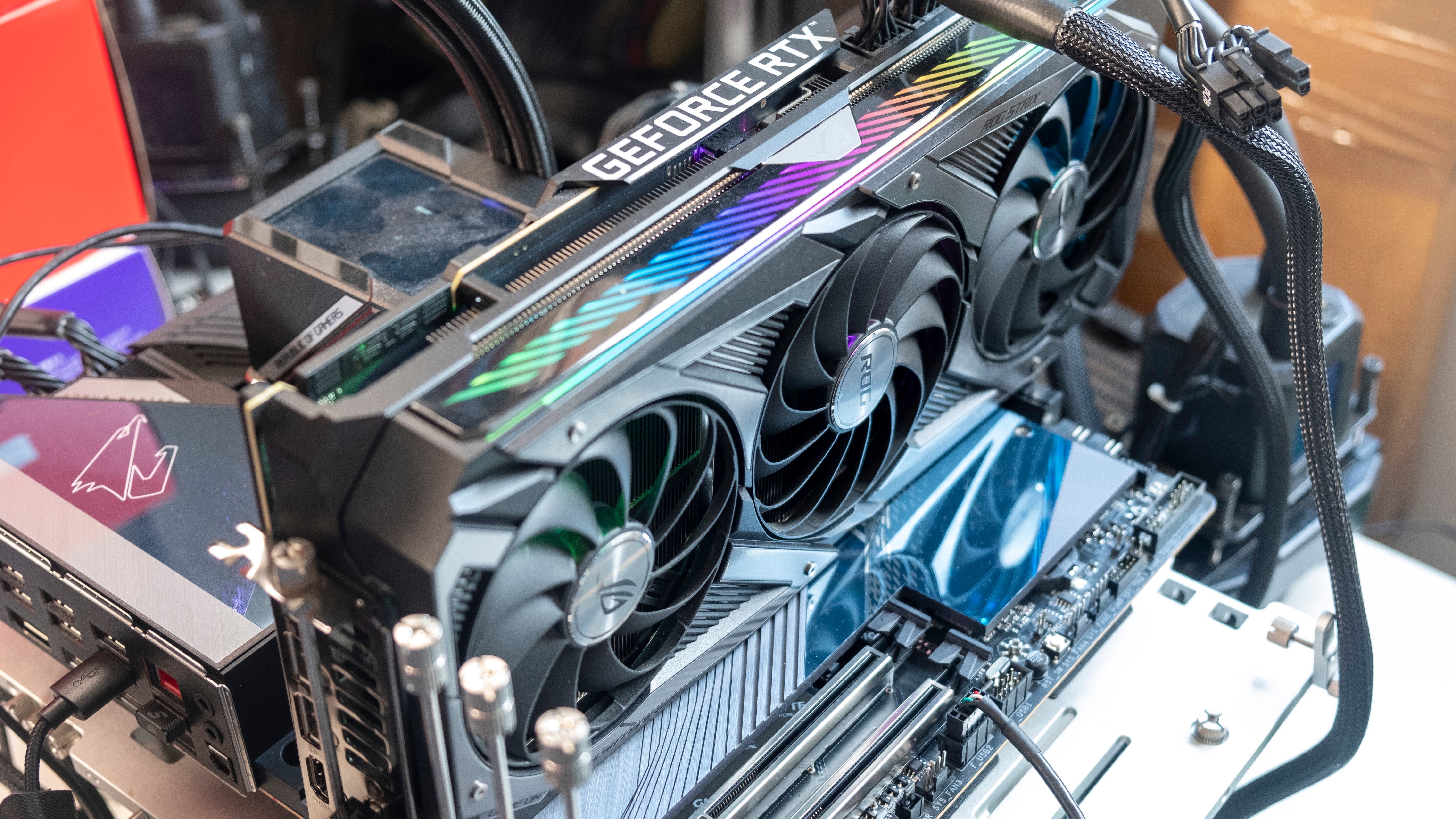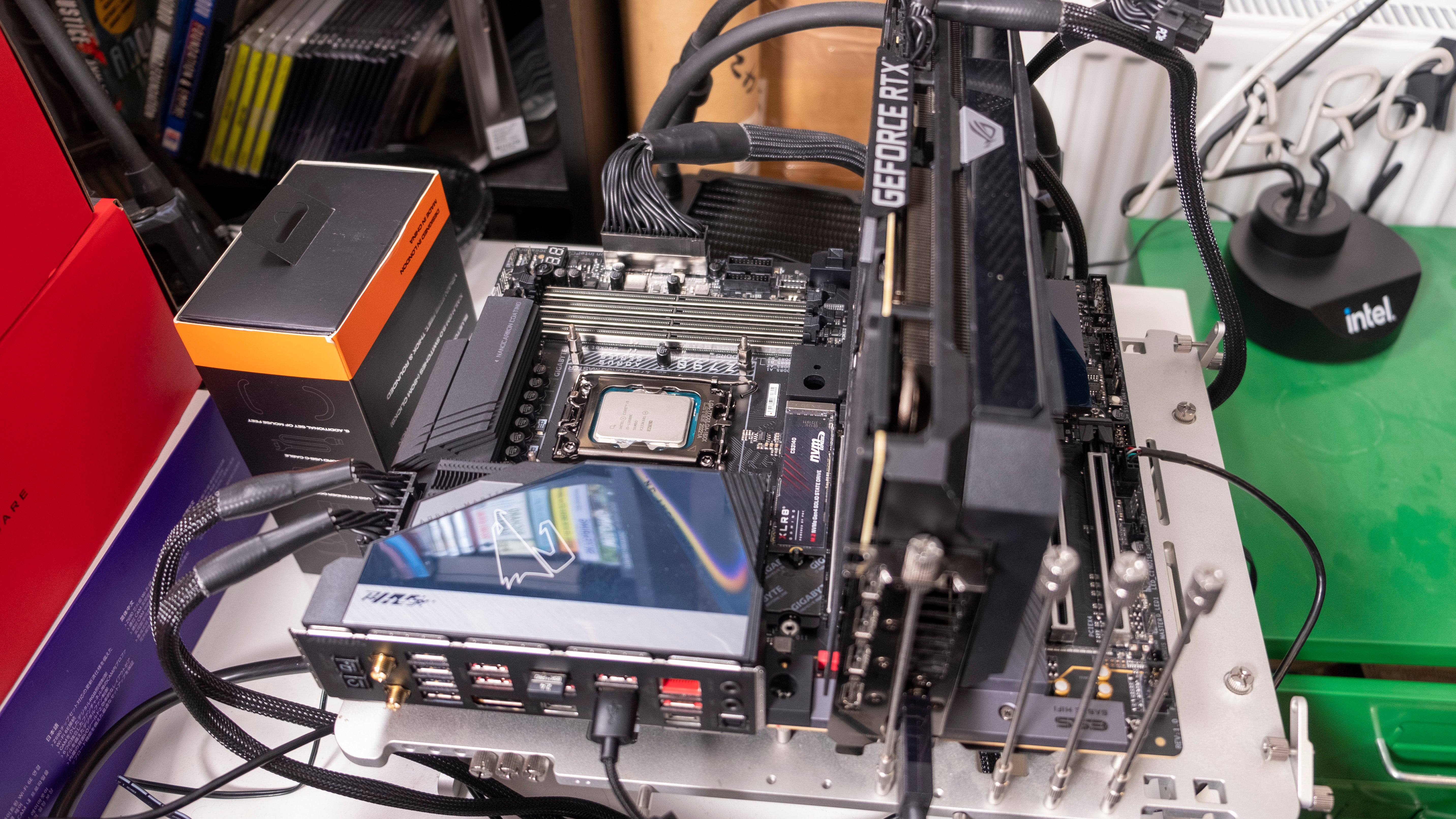To discover if these processors live up to the hype, we’ve been testing the $589 Core i9 13900K and $319 Core i5 13600K in gaming and content creation benchmarks since last week. Our plan going in was simple: to find out exactly how much better these 13th-gen models are than their 12th-gen predecessors, as well as how they measure up to AMD’s new Ryzen 7000 and popular Ryzen 5000 alternatives - including the excellent Ryzen 7 5800X3D.
As with our Ryzen 7000 testing, we’ve opted to check two RAM configurations for each new processor: DDR5-5200, representing ‘budget’ DDR5, and DDR5-6000, the AMD-identified sweet spot for price versus performance. We’ve also done some more in-depth RAM testing on page five, showing the maximum gains you can expect to see from opting for specialist high-speed RAM over more pedestrian models.
The 13900K and 13600K represent the upper and lower bounds of the initial Raptor Lake range - otherwise, there’s a $409 Core i7 13700K in the middle and ‘F’ variants that cost $25 less but don’t include integrated graphics. As usual, we expect to see cheaper Core i5 and Core i3 models later on, where we could see even better value propositions if 12th-gen is any indication.
Looking at the specs provided by Intel for the new 13th-gen lineup, two things jump out at me. First, though Intel warned we might see higher prices, we only see two models that are more expensive than their counterparts - the Core i5 models are $30 more expensive, while the Core i7 and Core i9 parts are the same price. (Real world prices may vary, of course.) Secondly, the jump in turbo frequencies is incredible - 200MHz higher for the Core i5, 400MHz for the Core i7 and 600MHz for the Core i9. That’s a massive improvement given that these chips are made using the same ‘Intel 7’ process node.
At this stage, before we dive into the content creation benchmark results, it’s probably worth briefly outlining what hardware we’re using in our test sytem. While we initially planned to test on the same Z690 board we used for our 12th-gen testing, we had boot and XMP issues with the Asus Z690 Maximus Hero board, even with the latest BIOS installed, and swapped instead to a Gigabyte Z790 Aorus Master. This motherboard offers all of the features we look for - a power button and boot code indicator on the motherboard itself, a quick-release PCIe slot, robust power delivery, five (!) NVMe slots, and of course support for PCIe 5.0 and DDR5 RAM. (We’ve also received an Asus Z790-I Gaming WiFi board that will no doubt feature in subsequent testing, and an MSI board is also reportedly on the way.) We’ll go into more detail about the motherboards we were able to test on page six.
This new Aorus motherboard is combined with high-spec G.Skill’s Trident Z5 Neo DDR5-6000 CL30 RAM, Corsair’s Dominator Platinum DDR5-5200 CL40 for supplementary testing and of course Asus’ RTX 3090 ROG Strix OC for the all-important GPU side of things. For storage, we’re using three PCIe 4.0 NVMe SSDs to hold all of our games - a 4TB Kingston KC3000, a 1TB PNY XLR8 CS3140 and a 1TB Crucial P5 Plus. Our rig was completed with a 1000W Corsair RM1000x power supply.
Elsewhere, we used an Asus ROG Crosshair 8 Hero for Ryzen 5000 testing, an Asus ROG Maximus Z590 Hero for 11th-gen Intel testing and an Asus ROG Z690 Maximus Hero for 12th-gen testing; all of these are high-end boards for their respective platforms. DDR4 motherboards used G.Skill 3600MT/s CL16 memory, the sweetspot for DDR4.
Before we get into the gaming benchmarks that make up pages two to five, let’s whet our appetite with some quick and dirty content creation benchmarks: a Cinebench R20 3D render and a Handbrake video transcode.
The 13900K is hugely impressive here, completing our H.265 (HEVR) transcode in three minutes and eight seconds - a new record - that works out to an average of 41.2fps, making the 13900K the first to reach the 40s while the next-fastest CPU we’ve tested hasn’t even cracked 30fps. It does, however, draw an extra 100W compared to our Z690 system with the 12900K.
Still, in my book, I’d say the uptick in power consumption is worth it, given that your CPU will use much less power in non-AVX workloads like H.264 encoding or gaming; of course in gaming we’d expect thread utilisation to also be significantly lower. Intel’s claims of a more efficient processor, performance per watt, is definitely borne out. Be aware that most motherboards default to running flat-out though, so you will see higher power draw from the 13900K and 13600K compared to 12900K and 12600K - something worth changing in the BIOS if you’d prefer a cooler, quieter system.
The 13600K also acquits itself well, exhibiting better single-core speeds than the 12900K and better multi-core results than the 12700K. In fact, it’s fairly close to the 5950X while consuming around the same amount of power, which is absurd for a Core i5. All-told, it’s a 40 percent advantage for the 13600K over its last-gen counterpart in terms of both Cinebench and Handbrake - nice.
Now, let’s get into the fun stuff - the games. We’ve tested a range of titles, so pick out your favourites from the links below or just hit that next page button to continue the journey. Remember, you get a special prize for reading every page of the review..!
Intel Core i9 13900K and Core i5 13600K analysis
Introduction, test rig and content creation benchmarks [this page] Gaming benchmarks: Flight Simulator 2020, Hitman 3 Gaming benchmarks: Counter-Strike: GO, Metro Exodus EE, Black Ops Cold War Gaming benchmarks: Cyberpunk 2077, Far Cry 6, Crysis 3 Remastered Gaming benchmarks: Memory bandwidth analysis Z790: platform overview and motherboard analysis Intel Core i9 13900K and Core i5 13600K: the Digital Foundry verdict



